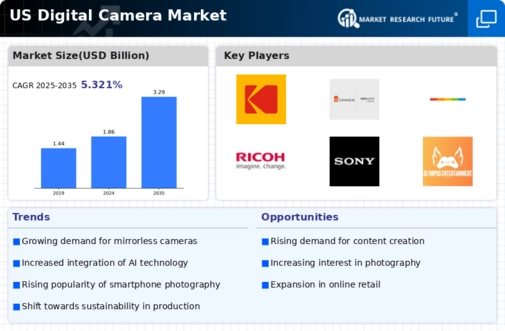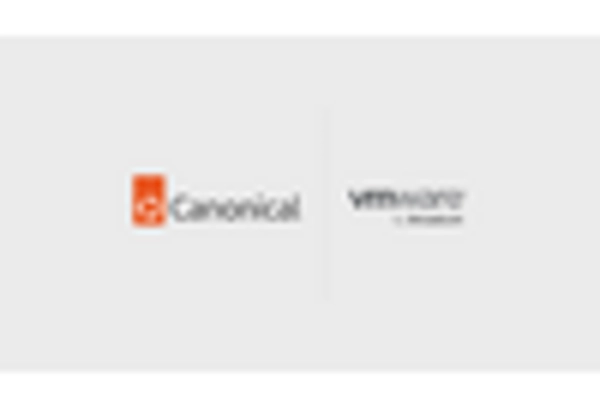Expansion of E-commerce Platforms
The digital camera market is witnessing a significant shift towards e-commerce platforms, which are becoming the primary sales channel for consumers. The convenience of online shopping, coupled with competitive pricing and extensive product reviews, is driving this trend. In 2025, it is estimated that online sales will represent over 50% of total camera sales in the US. This shift is prompting traditional retailers to enhance their online presence and adapt to changing consumer preferences. The digital camera market is thus evolving, with manufacturers increasingly focusing on digital marketing strategies to reach potential customers. This transition to e-commerce is likely to facilitate greater accessibility to a wider range of products, ultimately benefiting consumers and driving market growth.
Rising Popularity of Hybrid Cameras
The digital camera market is currently experiencing a rising popularity of hybrid cameras, which combine the features of both DSLRs and mirrorless systems. These versatile devices appeal to a broad audience, from casual users to professional photographers, due to their compact size and advanced functionalities. The market for hybrid cameras is projected to grow by approximately 20% in the coming years, as consumers seek equipment that offers flexibility and high performance. This trend indicates a shift in consumer preferences towards multifunctional devices that can adapt to various shooting conditions. The digital camera market is thus likely to benefit from this growing interest, as manufacturers continue to innovate and refine hybrid camera technology.
Increased Demand for Content Creation
The rise of social media platforms and content-sharing websites has led to an increased demand for high-quality visual content. This trend is particularly evident among influencers, vloggers, and amateur photographers who seek superior image quality. The digital camera market is responding to this demand by offering models specifically designed for content creation, such as compact cameras with 4K video capabilities. In 2025, it is estimated that the market for cameras catering to content creators will grow by approximately 15%. This growth is indicative of a broader shift towards professional-grade equipment among casual users. The digital camera market is thus adapting to meet the needs of a new generation of content creators, further driving market expansion.
Technological Advancements in Imaging
The digital camera market is experiencing a surge in technological advancements, particularly in imaging capabilities. Innovations such as higher megapixel counts, improved low-light performance, and advanced autofocus systems are becoming standard features. For instance, cameras with 50 MP sensors are now available, catering to professional photographers and enthusiasts alike. This trend is likely to enhance the overall user experience, making high-quality photography more accessible. As a result, the demand for advanced imaging technology is expected to drive growth in the digital camera market. Furthermore, the integration of artificial intelligence in image processing is anticipated to streamline workflows, thereby attracting a broader consumer base. The digital camera market is thus poised for significant expansion as these technological enhancements continue to evolve.
Growing Interest in Photography as a Hobby
There is a notable increase in the number of individuals taking up photography as a hobby, which is positively impacting the digital camera market. This trend is fueled by the availability of online courses, tutorials, and photography communities that encourage participation. As more people engage in photography, the demand for entry-level and mid-range cameras is likely to rise. In 2025, it is projected that sales of beginner-friendly digital cameras will account for nearly 30% of the total market share. This shift indicates a growing appreciation for photography, which the digital camera market is well-positioned to capitalize on. Manufacturers are responding by developing user-friendly models that cater to novice photographers, thereby fostering a vibrant community of enthusiasts.
















Leave a Comment